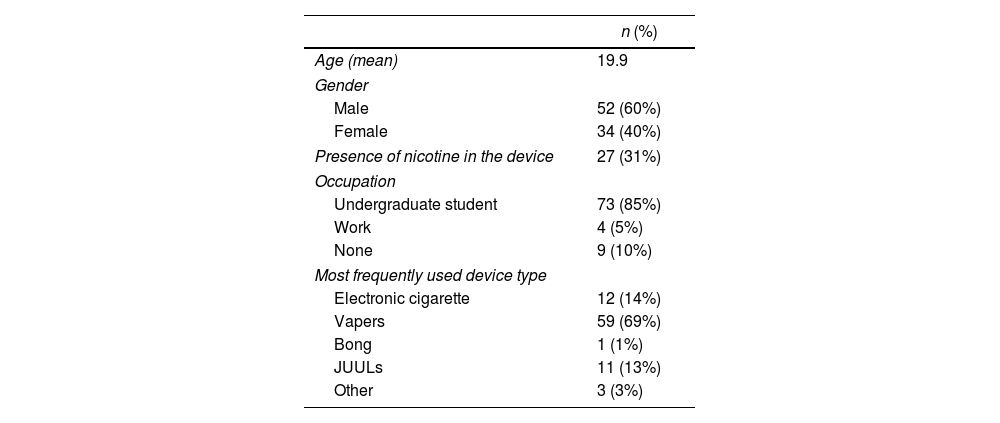Because the SARS-CoV-2 pandemic fostered an environment marked by limitations for social encounters and emotional fluctuations, it is essential to determine the variations in the consumption of Electronic Nicotine Delivery Systems (ENDS) and Electronic Non-nicotine Delivery Systems (ENNDS) during this period in young Colombians between 18 and 25 years of age, evaluating the emotional factors that affect the consumption mentioned above and the risky consumption.
MethodsAfter collecting data through a virtual survey, in this cross-sectional study a mainly descriptive analysis of variables related to the consumption of ENDS and ENNDS was carried out in parallel with three different mental health outcomes: depression, anxiety, and loneliness.
ResultsMost participants reported a decrease or cessation of their consumption during the restrictive measures, which is consistent with the fact that more than half said that consumption was limited to social gatherings. Additionally, anxiety and loneliness symptoms are more present in those participants with risky consumption than those who do not.
ConclusionAlthough the consumption of ENDS and ENNDS has a social predominance, there may be factors that modulate it. For this reason, it is essential to deepen research on this topic to propose public health strategies that allow this consumption to be mitigated.
Debido a las limitaciones sociales propiciados por la pandemia por SARS-CoV-2 y las fluctuaciones emocionales asociadas, es esencial determinar las variaciones en el consumo de sistemas electrónicos de administración de nicotina (SEAN) y sistemas electrónicos sin suministro de nicotina (SSSN) durante este periodo en jóvenes colombianos entre 18 y 25 años, evaluando los factores emocionales que afectaron el patrón de consumo y aquel riesgoso.
MétodosDespués de recopilar datos por medio de una encuesta virtual, en este estudio transversal se realizó un análisis principalmente descriptivo de variables relacionadas con el consumo de SEAN y SSSN en paralelo con tres desenlaces de salud mental distintos: depresión, ansiedad y soledad.
ResultadosLa mayoría de los participantes reportó una disminución o cesación de su consumo durante las medidas restrictivas, lo cual es acorde con el hecho de que más de la mitad haya reportado al momento de realizar la encuesta un consumo limitado a las reuniones sociales. Adicionalmente, la sintomatología ansiosa y de soledad está más presente en aquellos participantes con un consumo riesgoso en comparación con aquellos que no lo tienen.
ConclusionesAunque el consumo de SEAN y SSSN tenga un predominio social, puede haber factores que lo modulen. Por ello, es importante ahondar la investigación en este tema para poder plantear estrategias de salud pública que permitan atenuar este consumo.
Artículo
Comprando el artículo el PDF del mismo podrá ser descargado
Precio 19,34 €
Comprar ahora








